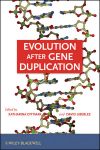Lactose Intolerance: A Sign to Stop Nursing
 Bloating, gas, nausea, diarrhea—all symptoms of lactose intolerance. However, the term “symptoms” may be misleading, because lactose intolerance is not a disease, nor is it a “milk allergy” (the immune system is never involved). In fact, while this may come as a surprise to many milk-guzzling Americans, lactose intolerance is the rule in most other regions of the world, not the exception.
Bloating, gas, nausea, diarrhea—all symptoms of lactose intolerance. However, the term “symptoms” may be misleading, because lactose intolerance is not a disease, nor is it a “milk allergy” (the immune system is never involved). In fact, while this may come as a surprise to many milk-guzzling Americans, lactose intolerance is the rule in most other regions of the world, not the exception.
All mammals—including humans—are born with lactase: an enzyme produced by cells lining the small intestine. The purpose of this enzyme is to digest lactose: a form of sugar found in dairy products, particularly milk. Right after weaning (around ages 2-4 in humans), lactase enzymes are designed to shut down. When the enzymes stop digesting lactose, the unabsorbed sugar undergoes bacterial fermentation, which results in indigestion, bloating, nausea, etc. Thus, disagreeable bodily reactions to dairy are really nature’s way of saying, “Hey, time to stop nursing!”
Lactose intolerance (LI), or the result of the body’s inability to produce lactase, is a very common condition. It affects about 75% of the world’s population,1 although its prevalence varies greatly by region and ethnicity. This variation has a lot to do with the evolution of different populations’ relationships to the animals they raise.
About ten thousand years ago, certain human populations began to domesticate animals and to drink their milk. These humans developed a genetic mutation, located on the gene SNP C/T13910,2 which kept their lactose-digesting enzymes functioning past childhood.
In herding populations, the mutated gene rapidly spread, because it conferred the advantage of allowing humans to breast-feed from another species for life. Consequently, this gene shows up in northern European populations with about an 86% frequency, whereas in southern European populations, where people were not historically big herders, the gene appears with only about a 33% frequency. Meanwhile, the gene is almost completely absent in the Far east and other areas where dairy cattle were unknown.
In America, language like “causes” and “symptoms” and “treatments” all give the impression that LI is a rare and horrible affliction. (Never mind all of the Got Milk? ads that reinforce milk drinking as healthy and trendy.) However, the next time you are sitting at a diner gazing longingly at your friend’s vanilla shake, find some reassurance that 75% of the rest of the world shares your pain.
 Science, Society, and the Supermarket: The Opportunities and Challenges of Nutrigenomics
Science, Society, and the Supermarket: The Opportunities and Challenges of Nutrigenomics
by David Castle, Cheryl Cline, Abdallah S. Daar, Charoula Tsamis, and Peter A. Singer
 Bioactive Components in Milk and Dairy Products
Bioactive Components in Milk and Dairy Products
by Young W. Park
| Resources from Wiley on This Topic | |
1. Scrimshaw NS, & Murray EB (1988). The acceptability of milk and milk products in populations with a high prevalence of lactose intolerance. The American journal of clinical nutrition, 48 (4 Suppl), 1079-159 PMID:
2. Swallow, D. (2003). G L P L I Annual Review of Genetics, 37 (1), 197-219 DOI: 10.1146/annurev.genet.37.110801.143820












Hi, great post! May be the evolution of lactose toleration was due to the climate of northern populations. Cold and less sunlight could have impeded the growing of cultives, so only the people able to digest with animal milk was able to survive, therefore a phenomenon of “bottleneck” ocurred, and the mutation of lactose tolerance was fixed in the population.
In this sentence “Meanwhile, the gene is almost completely absent in the Far east and other areas where dairy cattle were unknown.” Are you referring to Far east like Eastern Europeans or Far east like Asia? If the latter, then I completely disagree since raising dairy has been historically documented and there are numerous references that milk was frequently used since the Indus Valley civilization age. Although, lactose intolerance is prevalent in Asia, they remain part of a significant but a minority of the population.